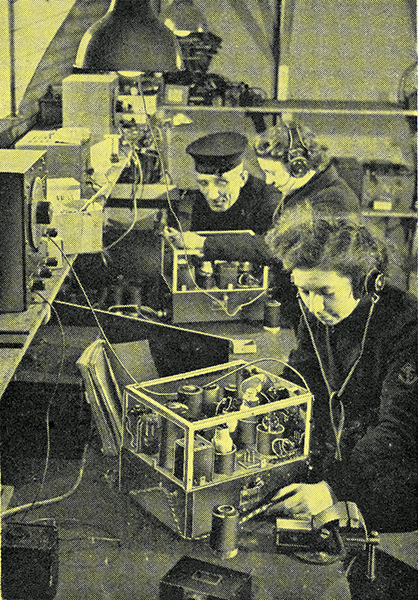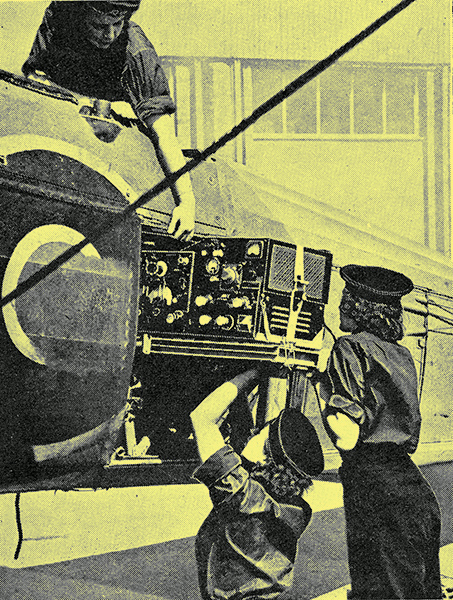|
Maintaining Naval Air Arm equipment.

Some months ago [★] October 1942 See side bar for link. we described the intensive course of training undertaken by members of the Womens Royal Naval Service to qualify as Radio Mechanics. It is now possible, as a result of a recent visit to a Royal Naval Air Station, to give some idea bf the work undertaken by these girls when their training is completed.
The station chosen was HMS Kestrel, where Wireless Telegraphist Air Gunners are trained for the Naval Air Arm. It is at such a station, where it is necessary to maintain a large staff of mechanics for the maintenance of the aircraft and associated wireless equipment used for training purposes, that Wren Air Mechanics (who look after the engines, airframes, ordnance and electrical equipment) and Radio Mechanics are playing a big part. The replacement of male naval ratings by Wrens has been going on at this station for some time, and there is now a dilution of 1:1. While in some categories the dilution is not so great, in that of Radio Mechanic 75% of the staff are Wrens.
Before passing out as Leading Wren Radio Mechanics, recruits, who must have had a secondary school or similar education and gained the school certificate with credit in mathematics or physics, take a four to six months basic training course of the type already described, which is followed by a practical course at a Naval Air Station. After twelve months service as Leading Wren they are eligible for recommendation for promotion to Petty Officer Wren.
At HMS Kestrel all radio apparatus installed in the training aircraft is tested after each thirty hours flying. This means that there is a considerable amount of routine testing. When apparatus is found to be faulty it is removed by the Wrens and repaired in the workshops Which, with the exception of a Chief Petty Officer, is entirely staffed by girls.
Another task undertaken is the testing of some of the apparatus in flight; those doing this work have, therefore, been nicknamed 'Flying Wrens'.
While there are, of course, circuit failures in the sets, quite a large proportion of the faults are mechanical, brought about by vibration and other conditions of service.
Typical NAA Sets
The number of different types of set handled by Wrens is fairly small, and they therefore quickly become. conversant with faults likely to develop. One of the transmitter-receivers, which operates on phone and MCW, has remote press-button tuning for four spot frequencies, which are crystal controlled.
Another set handled by Wren Radio Mechanics was specially designed for the Naval Air Arm and is installed in multi-seater aircraft such as the Fulmar. An interesting point in the design of this transmitter-receiver, which works on CW only, is that the tuning coils are temperature compensated. They have a frequency stability of ±0.1% at altitudes up to 40,000 ft., and at temperature variations from +30 ° to -30 °C.
The set derives its power from a motor generator driven by a 12 or 24-volt battery. The transmitter has an output of 10 Watts.
The station visited is one of many such centres round the coast where Wren Radio Mechanics are doing a man's job.

These photographs, taken at a Royal Naval Air Station, show Wren Radio Mechanics testing, repairing and installing radio equipment for the Naval Air Arm.
|